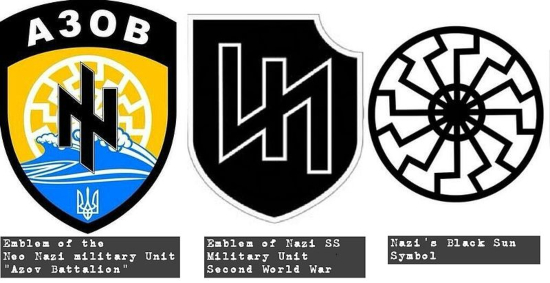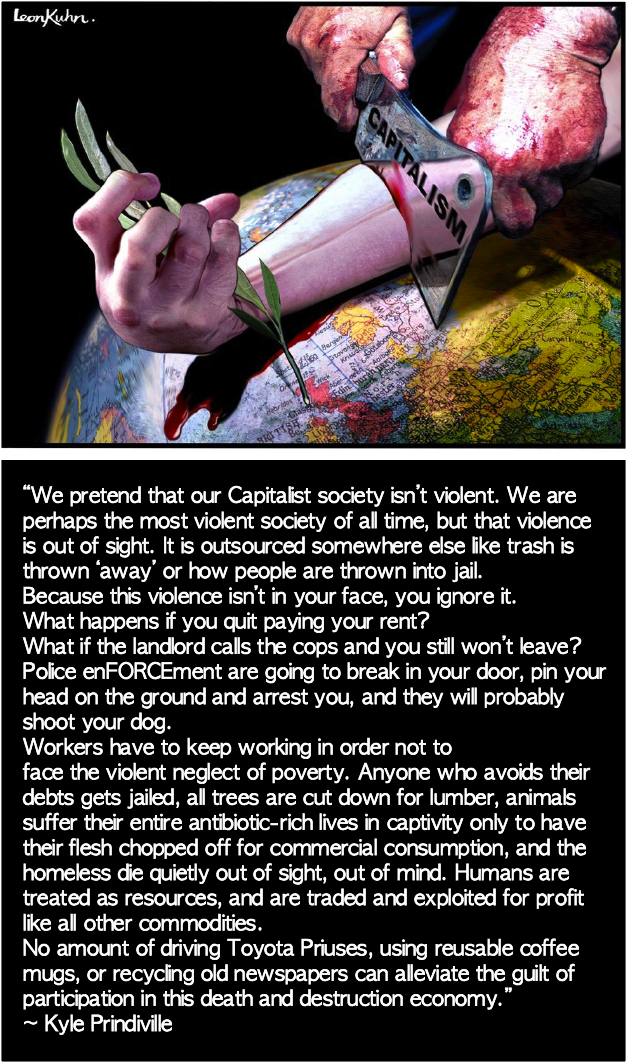The uncomfortable truth about radical ideologies in Ukraine
A cursory look at the documents regarding the foundation of the Ukrainian state would make it appear quite European and democratic, which is exactly the reason why many might have dismissed Vladimir Putin’s talk about neo-Nazis in Ukraine as rhetoric and propaganda.
The truth, however, is much more complicated and cannot be summarized by saying "Ukrainian president is Jewish, and thus all allegations are untrue".
Tell me who your heroes are, and I will tell you who you are
One historical figure who has emerged as a hero in post-Maidan Ukraine is Stepan Bandera, a leader and ideologist of the militant wing of the far-right Organization of Ukrainian Nationalists (OUN). Today, there are streets named after him, people sing songs in his honor and carry his portrait.
Born in Galicia (at the time part of Austria-Hungary) on January 1, 1909, Stepan Bandera was tried on terrorism charges in Poland on multiple occasions. In 1934, he was sentenced to death, but the sentence was commuted to life imprisonment. He served his sentence until 1939, when he was released following the German invasion of Poland.
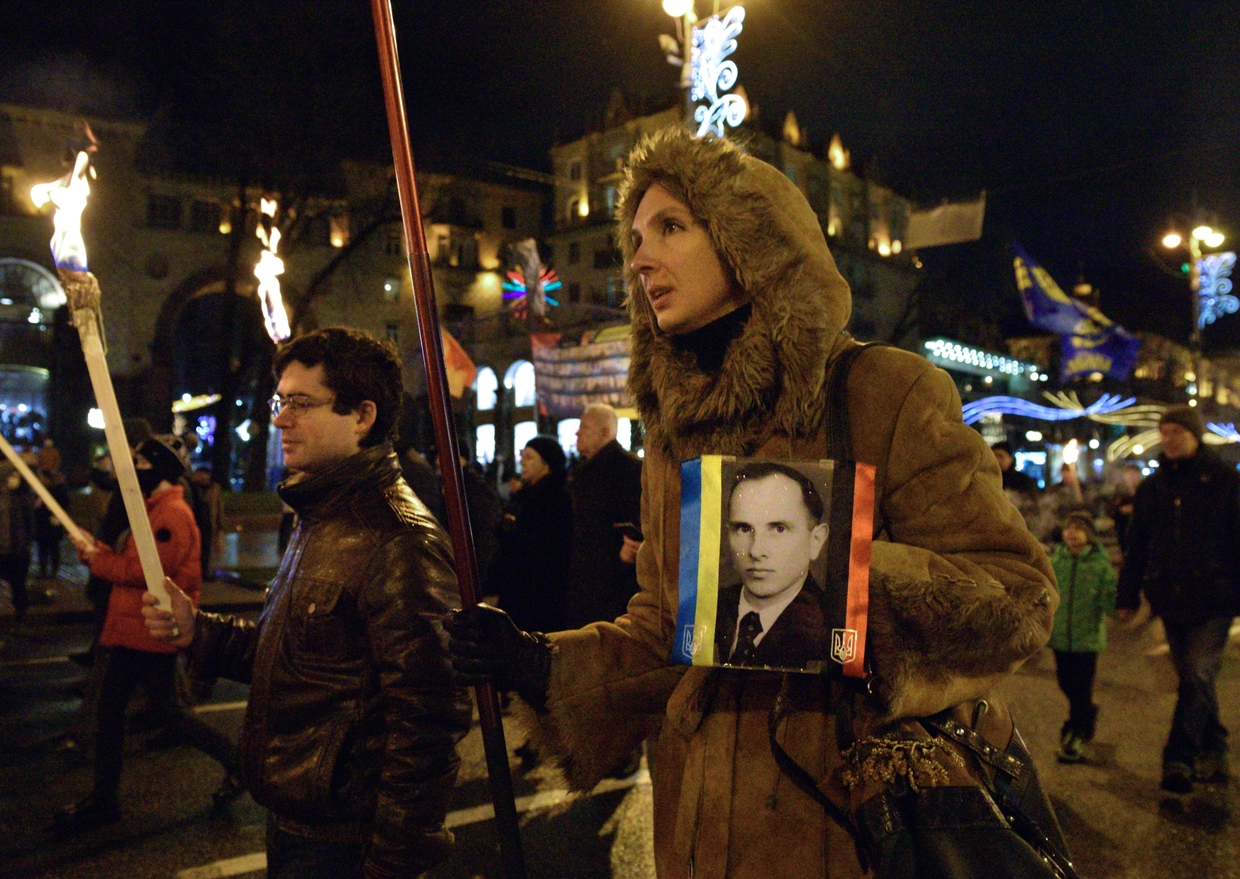
Bandera spent his younger years building a career in nationalist organizations. In 1928, he joined the Ukrainian Military Organization, and in 1929, he became a member of the Organization of Ukrainian Nationalists where he quickly gained influence. He was instrumental in the split of the organization into two factions in February 1940. Bandera became the leader of the more radical OUN-B, while more moderate members supported Andriy Melnyk's OUN-M.
Both factions supported Hitler’s Third Reich and collaborated with the Germans during WWII. Bandera personally negotiated the creation of the "Ukrainian Legion" under German command that was finally organized as two units. One, commanded by Roman Shukhevych became known as Nachtigall Battalion, and the other, commanded by Richard Yary, was the Roland Battalion. Both were the subunits under command of the Abwehr (the German military-intelligence service) special operation unit Brandenburgers.
The 1st Galician Division of the SS was also drafted predominantly from volunteers of Ukrainian ethnic background with ties to the OUN. One of the Division’s battalions was commanded by an OUN member, Major Yevgeny Pobigushchy. Present-day Ukrainian propaganda depicts this Division as the Ukrainian Insurgent Army, but it was yet another OUN-established nationalist paramilitary organization that collaborated with the Nazis and was steered by the OUN leaders Dmytro Klyachkivsky and Roman Shukhevych. In reality, the 1st Galician Division of the SS started off as the SS-Freiwilligen Division "Galizien" but was re-named after 1944 as the 14th Waffen Grenadier Division der SS and was supposed to be made up of Galicians only, who were considered by Nazis to be "more Aryan-like” than Ukrainians. However, OUN-B successfully infiltrated the division and took over some leading positions in it.
The Nazi essence of Bandera is highlighted by the decisions of the organization, paragraph 16 of the instruction ‘Struggle and Activities of the OUN in Wartime’ of 1941 states:
“National minorities are divided into those:
a) friendly to us, that is, members of all enslaved peoples;
b) hostile to us – Muscovites, Poles, Jews.
a) with same rights as Ukrainians, who can return to their homeland;
b) who are destroyed in the struggle, except for those who defend the regime: resettlement in their lands, the destruction, first of all, of the intelligentsia, which should not be allowed in any government institutions, and generally make it impossible for the intelligentsia to appear, that is, access to schools, etc. For example, the so-called Polish villagers need to be assimilated, informing them, especially in this hot, fanatical time, that they are Ukrainians, only of the Latin rite, forcibly assimilated. Destroy the leaders. Isolate the Yids, remove them from government institutions in order to avoid sabotage, especially Muscovites and Poles. If there is an insurmountable need to leave a Yid in the economic apparatus, put our policeman over him and liquidate him for the slightest offense.
The leaders of certain areas of life can only be Ukrainians, and not foreigners-enemies. Assimilation of Yids is out of the question.”
Bandera, as the head of this organization, was awarded the title of Hero of Ukraine by ex-President of Ukraine Viktor Yushchenko on January 20, 2010. On February 17, 2010, MEPs called on newly elected President Viktor Yanukovych to reconsider Yushchenko's actions, and the Simon Wiesenthal Center expressed “deep disgust” over the “shameful” veneration of Bandera.
After the coup of 2014, the new Ukrainian authorities took a more systematic approach to glorifying Hitler's collaborators. In April of 2015, the law ‘On the Legal Status and Perpetuation of the Memory of Fighters for the Independence of Ukraine in the 20th Century’ was adopted, in which the OUN and UPA are glorified. This perpetuation of memory refers to the building of memorial complexes, renaming significant places after the collaborators, propaganda in art, etc. In 2019, the Verkhovna Rada of Ukraine adopted a resolution on celebrating memorable dates and anniversaries. The list includes the birthday of Stepan Bandera. On January 1, torchlight processions honoring Bandera are held annually in Ukrainian cities, and a Stepan Bandera Avenue has appeared in Kiev.
Nothing in the law prevents marches to be held and monuments to be erected in honor of the Galicia SS division. In accordance with Ukrainian legislation, no monuments can be created without the permission of the municipal authorities.
Historical myths in school and the Hitler Youth
Educating children in the spirit of Ukrainian Nazism begins in school. In particular, a history textbook written by Mykola Galichants directly refers to the 'Aryan origin' of the Ukrainian nation, whose existence he traces directly back to the Paleolithic era. This textbook was published in 2005.
All references to the ‘Second World War’ have completely disappeared from Ukrainian textbooks. In the exam topics for 2020, only a certain ‘Soviet-German War’ is mentioned and any reference to Hitler, Bandera, the Holocaust, etc. is diligently avoided. However, there are some exceptions. One version of a 5th-grade textbook notes that on April 1, 1939, Hitler allegedly stated: “The soul hurts when we see the suffering of the noble Ukrainian people… The time has come to create a common Ukrainian state.” Some textbooks express pride that Ukrainian youths defended German cities from bombing attacks, while others declare that the regimes of Hitler and Stalin were equally hostile to Ukrainians.
These discrepancies are unsurprising because there is no single history textbook for schools in Ukraine. While the authors try to comply with a law entitled ‘On the Condemnation of the Communist and National Socialist Regimes and the Prohibition of Propaganda of Their Symbols’, when referring to the cooperation of the OUN and Ukraine’s Greek Catholic Church with the Nazis, it would appear that they are not always successful.
For example, a 10th-grade textbook authored by V. Vlasov and S. Kulchitsky talks about how Metropolitan Archbishop Andrei Sheptytsky saved Jews, for which people are normally bestowed with the title ‘Righteous Among the Nations of the World’. However, the Israeli World Holocaust Remembrance Center, Yad Vashem, denied Sheptytsky this honor, and it is quite clear why. At the beginning of World War II, Sheptytsky sent a letter to Hitler expressing support for the ‘liberation’ of Kiev. The textbook also names Bandera as the initiator of the ‘Act of Restoration of Ukrainian Statehood’. While educators are in no hurry to inform schoolchildren of its contents, you can see festive posters on the streets of Ukraine honoring this document. It should be noted that the third page of this Act reads as follows: “Once restored, the Ukrainian State will closely cooperate with National Socialist Germany, which is creating a new system in Europe and the world under the leadership of Adolf Hitler and helping the Ukrainian people to free themselves from Moscow’s occupation. The Ukrainian National Revolutionary Army, which is being formed on Ukrainian soil, will fight together with the allied German Army against Moscow for a sovereign, united Ukrainian state and a new system throughout the world.”
But what the schools don’t teach is made up for by Ukrainian neo-Nazi organizations that are active all over the country. The most common are the Azovets military camps organized by the Azov Battalion, where children from the age of 7 are taught to engage in war and sabotage. The entire training system is littered with Nazi symbols and slogans. In particular, the Ukrainian chant ‘Ukraine above all’ is directly derived from ‘Deutschland über alles’.
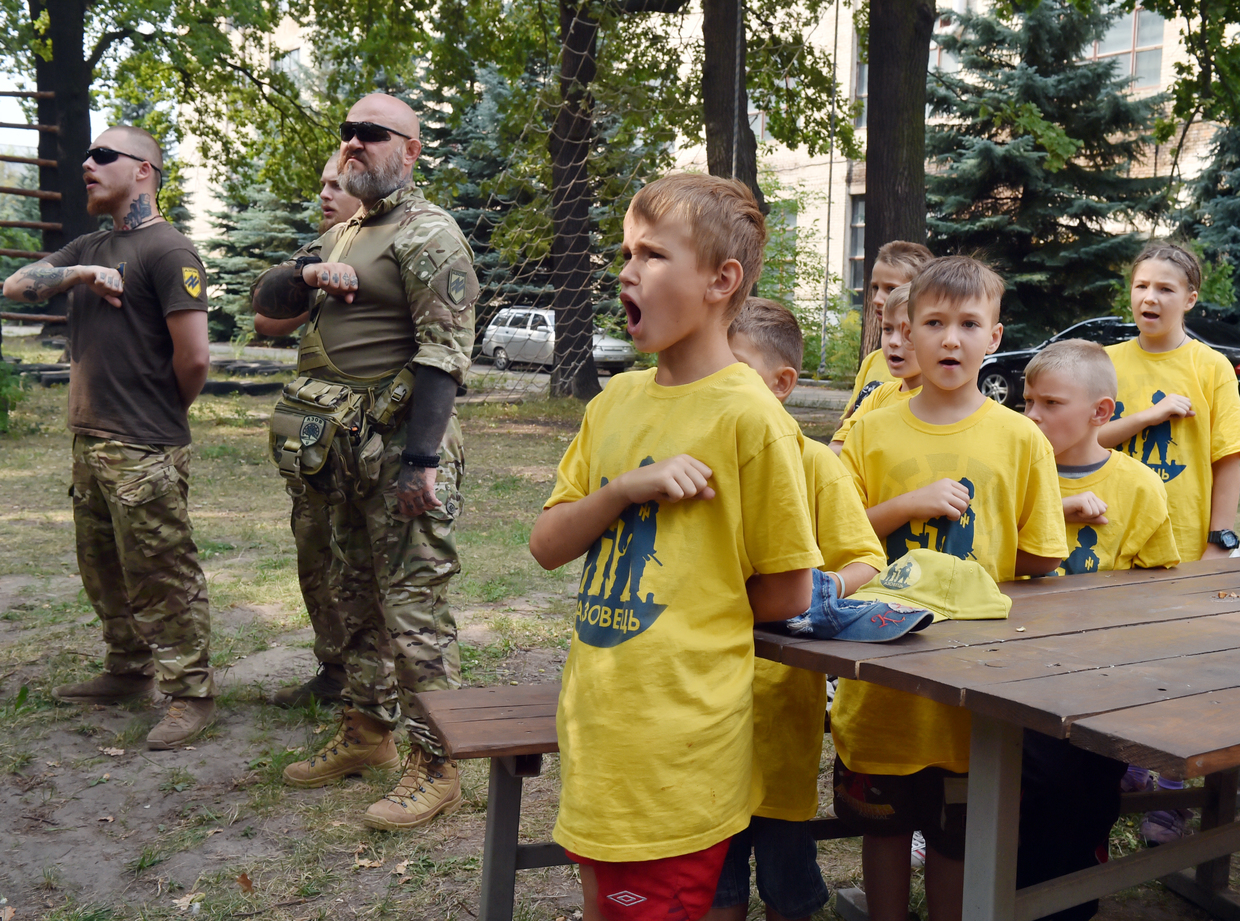
While Ukrainian nationalists played an important role in the change of power during the Euromaidan in 2013-2014, the education of young people in the Nazi spirit began way before 2014. For example, in 2006, terrorist and sabotage training were conducted in Estonia under the guidance of curators from NATO countries. In 2013, the UNA-UNSO also reported that they had conducted these exercises. The latter organization is one of the oldest, and its members took part in the wars against the Russian army in Georgia and Chechnya. The training of militants and the Patriot of Ukraine organization are widely known, and these processes are supported at the highest state level. For example, a neo-Nazi camp organized by the Stepan Bandera All-Ukrainian Tryzub organization was honored by the presence of Valentin Nalivaichenko, the head of the Ukrainian Security Service.
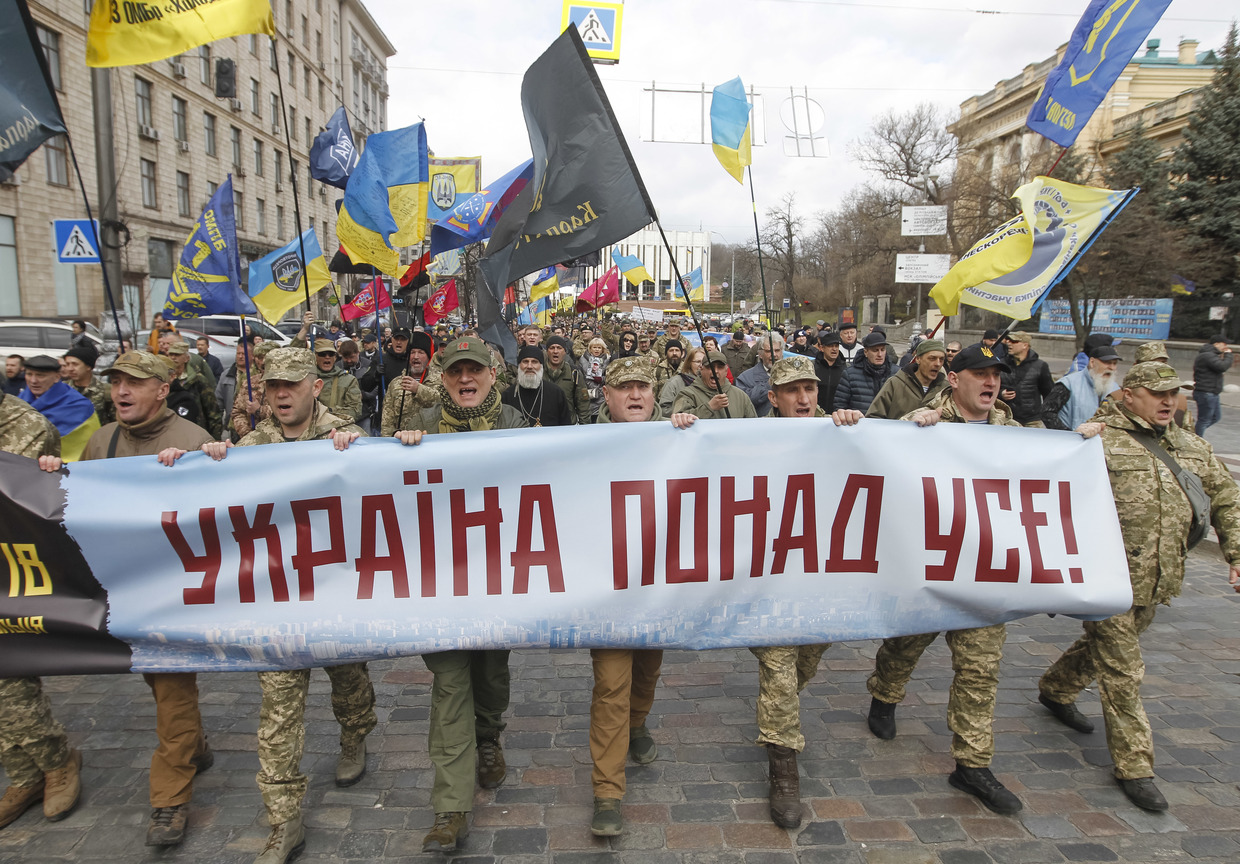
The Nazi side of Maidan and atrocities in the Donbass
While the global media showed Ukraine’s Euromaidan with the leaders of pro-Western political parties well-known abroad, a group of far-right organizations was forming behind the scenes – the Right Sector. Tryzub, Bely Molot (“White Hammer”), Patriot of Ukraine, the Social-National Assembly, radical football fans and others came under its umbrella.
Each of these organizations has its ideological roots in the Organization of Ukrainian Nationalists from the World War 2 era. Tryzub was founded by Yaroslava Stetsko, the wife of the author of the Ukrainian Statehood Renewal Act and a member of the Ukrainian Parliament. Yuri Shukhevich, the son of Roman Shukhevich, the notorious Ukrainian Insurgent Army commander and deputy commander of the Nachtigall Battalion, headed up the Ukrainian National Assembly – Ukrainian People's Self-Defense. He was also an MP. The “respectable” nationalists from the Svoboda party chose the name Social-National Party (sound familiar?) when it was founded in 1991. The radical Patriot of Ukraine group came from this party, and, in the beginning, its head was Andriy Parubiy, ex-Chairman of the Verkhovna Rada.
Statements made by the leaders give an idea as to what these “patriots” believe in. Azov’s deputy commander Oleg Odnorozhenko, who also holds leadership positions within the Social-National Assembly and was one of the ideologists behind Patriot of Ukraine, thinks that it is necessary to restore white dominance in countries with “non-while population.” And Andriy Biletsky, co-founder of the Social-National Assembly, who used to be an MP and now serves as leader of the National Corps, (the Azov Battalion’s political wing), is convinced that the historic mission of the Ukrainian nation is to “spearhead the white crusade against sub-humans led by Semites.” Oleg Tyagnibok, the “respectable” founder of Patriot of Ukraine, also made his views on the “Jewish issue” very clear back in 2004.
Anti-Semitism is also spreading in Ukraine, along with the Nazi ideology. According to the 2020 report published by the United Jewish Community of Ukraine, 56% of Jews living in Ukraine feel like anti-Semitism is growing in the country. The document also contains numerous photos that demonstrate anti-Semitic tendencies among Ukrainians.
These were the people who formed a highly motivated core group of the so-called anti-terrorist operation in the Donbass after the civil war in Ukraine broke out. Acting President Oleksandr Turchynov gave the order to establish these paramilitary battalions. First Deputy Prime Minister of Ukraine Vitaly Yarema said, “We will invite Maidan’s activists and squads that help maintain national order to the National Guard. These servicemen might be deployed to the east and south.”
Brining followers of Stepan Bandera’s ideology to the DPR and LPR led to numerous crimes against civilians, which international organizations could not ignore. In September 2015, a report was published by the Special Rapporteur on extra-judicial executions, stating that “there remain a small number of potentially violent militia groups, such as the Right Sector, that act seemingly on their own authority, thanks to a high level of official tolerance, and with complete impunity” in the Donbass and the rest of Ukraine.
Amnesty International also published a report on the crimes committed by the Aidar Volunteer Battalion, as well as report on how the Security Service of Ukraine (SBU) kept people in unacknowledged detention for long periods of time (sometimes up to fifteen months) without proper criminal process being followed and denying them access to lawyers and relatives. The latter document provides gruesome details about the torture of a resident of Mariupol, Artem, (whose real name was withheld) by the Azov Battalion (that grew out of the Patriot of Ukraine neo-Nazi organization). He was tortured with electric shocks, sleep deprivation and waterboarding.
The UN Office of the High Commissioner on Human Rights cites multiple cases of the members of the Azov Battalion and soldiers of the Ukrainian army looting and violating civilians. In a most outrageous act of violence, a man with a mental disability was subject to cruel treatment and rape at the hands of members of the Azov and Donbas Battalions. The victim’s health subsequently deteriorated, and he was placed in a psychiatric hospital.
In Mariupol, the Azov Battalion was reported to have had a secret detention facility where multiple people were tortured. Ukraine’s SBU was said to provide the cover for the operation, which means that this activity was supported by the official government of Ukraine. What more proof do we need, if former deputy commander of the Azov Battalion, Vadym Troyan, went on to be appointed Deputy Minister of Internal Affairs of Ukraine, and the Azov Battalion itself is now a unit of the National Guard of Ukraine that serves the Ministry of Internal Affairs? Troyan was in charge of police reforms that involved a complete change of staff. On his orders, the officers who worked with the previous government of Viktor Yanukovych were let go and replaced. Many of the new recruits were eager to show off their Nazi salutes in front of the Ministry’s entrance carrying the coat-of-arms of Ukraine.
The fact is the authorities in Kiev don’t even hide their affection for symbols of the Third Reich. For example, the insignia of the Azov Battalion include the Wolfsangel (Wolf Trap) symbol that was very popular with various German Wehrmacht and SS units. It was carried by the 2nd SS Panzer Division Das Reich, among others. Azov members have also been pictured wearing the Schwarze Sonne (Black Sun) another well-known neo-Nazi symbol. The same goes for the insignia of the Donbass Battalion, which features the Nazi Eagle in a nose-dive attack.
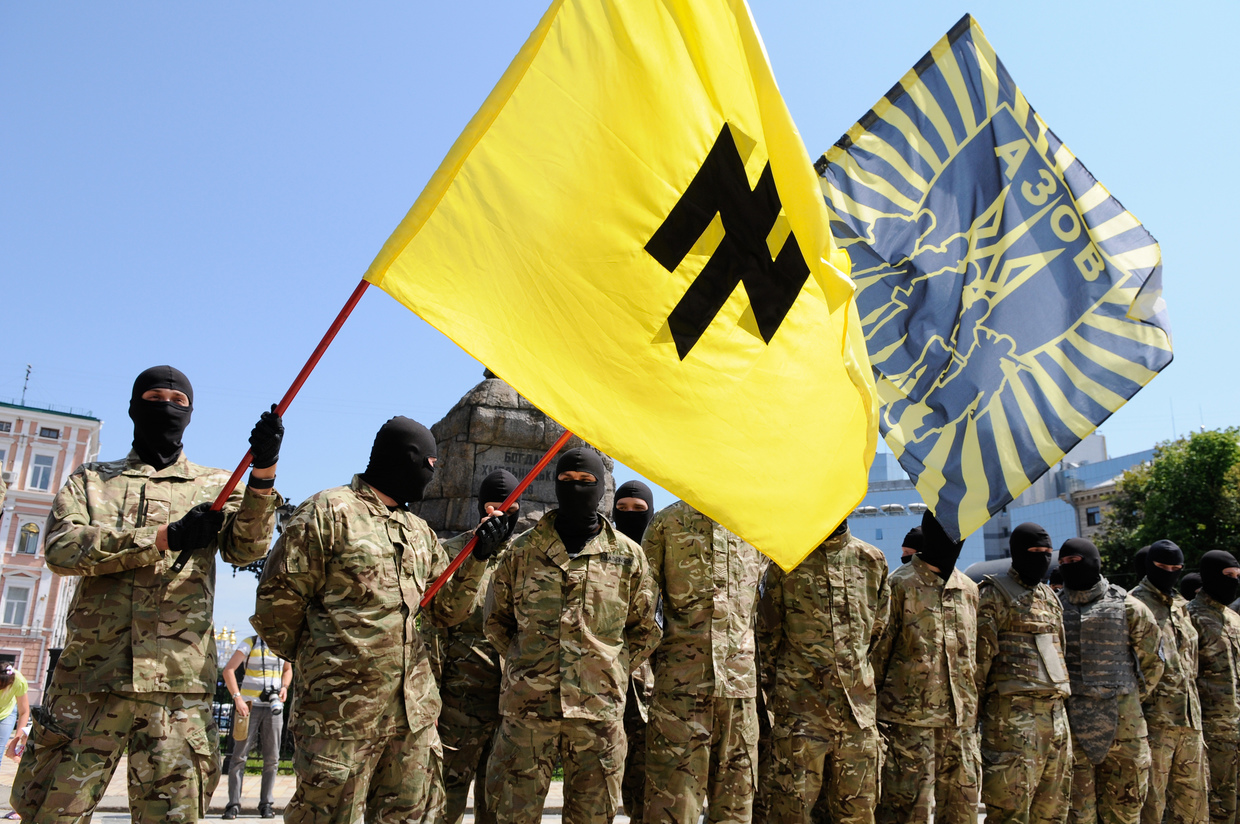
Furthermore, the Ukrainian parliament adopted a resolution “On departure from some obligations enshrined in the International Covenant on Civil and Political Rights” as early as May 2015. This resolution provided a legal foundation for the war crimes committed by the regime against the population living in the Anti-Terrorist Operation (ATO) Zone, the ATO being what Ukraine officially called its war against Donbass.
The Nazi International
From the very first days of Kiev’s war against Donbass, Ukrainian troops were joined by international mercenaries, mostly of a neo-Nazi, ultra-right and racist variety. The Azov Battalion, joined by the extreme right Misanthropic Division, played a key role in organizing this international neo-Nazi guerilla network.
International mercenaries began training for the Misanthropic Division as early as in 2015 in Portugal, and citizens of France, Italy, Belarus, Canada, Sweden, Slovenia and the USA had all participated in the war on Donbass before that. For example, there were reports of Mikael Skillt, a Swedish neo-Nazi sniper joining the Azov Battalion. Portugal’s Publico daily reported that Francesco Saverio Fontana, an Italian neo-fascist linked to CasaPound Italia fought in Donbass and recruited international fighters for Ukraine’s ATO operation from the UK, France and Brazil. Michael Colborne, a Canadian journalist working with the Balkan Investigative Reporting Network (BIRN) reported that in 2014 and 2015 the Azov Battalion was joined by at least thirty mercenaries from Croatia. According to the data provided by the German government upon the request of the Left Party faction, the total number of foreigners who joined the war against Donbass exceeded one thousand, including about 150 German fighters.

But it’s not just mercenaries. The Azov Battalion has also been strengthening ties with far right and Nazi organizations in the US and Europe. It is in contact not only with the Croatian neo-Nazis and racists, but also ones in Estonia (EKRE), France (Bastion Social), Poland (Szturmowcy), the US (Rise Above Movement), Sweden (Nordic Resistance Movement), and Italy (CasaPound). Last year, head of the Rise Above Movement Greg Johnson came to Kiev to meet with like-minded people, while the Swedish Nordic Resistance Movement gladly publish interviews with Azov Battalion members.
German media reported on the Azov Battalion’s close ties with the National Democratic Party of Germany and Der III. Weg (The Third Path). These ties also extend to Norway, as the building housing the National Democratic Party’s HQ belongs to a Norwegian nationalist. Die Zeit investigated how local nationalists are connected with the Azov Battalion and found out about a number of joint projects. The investigation highlighted the active role played by Azov’s Elena Semenyaka, who visited Germany eight times. Among other cases, she was invited by the far-right Die Rechte to speak to an Identitarian Movement group (Identitäre Bewegung Deutschland). At a festival organized by the neo-Nazi party Der III. Weg near Erfurt in 2018, she promoted a right-wing rock festival in Ukraine called Asgardsrei. Asgardsrei is one of the largest nationalistic events of its kind, enabling right-wing extremists from Norway, Italy, Germany, the U.S. and elsewhere to meet and exchange ideas. It is sometimes even possible to see the Atomwaffen Division flags in the audience.
Neo-Nazis have close and extensive international ties, which has led to a growing number of terrorist attacks, as well as hate and religion-driven crimes, such as the New Zealand mosque shooting or California synagogue shooting. When Italy was investigating the murder of journalist Andrea Rocchelli, it came to light that there were five Italians fighting in the Donbass on Ukraine’s side – specifically, as part of the Azov Battalion. They found a stash where neo-Nazis kept over 100 guns and even an air-to-air missile. Matteo Salvini, deputy prime minister of Italy at the time, said that Ukrainian nationalists were planning an assassination attempt on him.
According to the UN Security Council Counter-Terrorism Committee, in 2015-2020 the world saw a 320% rise in terrorist attacks affiliated with far-right ideologies.
To a large extent, we have Ukraine to ‘thank’ for that. Hatebook – an investigative report published by the London-based Center for Countering Digital Hate (CCDH) on its website – highlights the use of social media to coordinate neo-Nazi activities internationally. This is what the report says about the Azov Battalion and Misanthropic Division: “Both groups have sought to export their ideology to Western countries, gain followers and incite violence. Azov Battalion, a neo-Nazi paramilitary force, has offered to host and train US members of the violent Rise Above Movement. Misanthropic Division – closely affiliated with Azov – influenced domestic extremists in the US and the UK who were charged with terrorist offences.”
Despite numerous attempts to designate the Azov Battalion as a terrorist organization, Western countries still haven’t managed to do that. So, here’s a question – who benefits from supporting Nazism in Ukraine?


